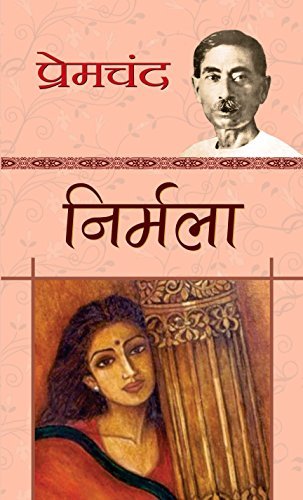Nirmala

Rating: 4.3/5
Author: Munshi Premchand
Publisher: Orient paperbacks
Publishing Date: January, 1927
Language: Hindi
Genre: Fiction
ISBN-10: 8122204953
ISBN-13: 978-8122204957
Format: Paperback
Pages: 160
Plot:
Premchand's novella Nirmala, first published in 1927, is one of the most poignant novels in Hindi on the theme of the young adolescent harnessed to an elderly husband. Nirmala is a story of a naive girl and her journey to a distressed, socially-detached woman who seems to have everything but lacks the valuable needs of life. The plot unfolds to reveal her husband’s suspicion of a relationship between her and his eldest son, a suspicion that leads to the son’s death. It also shows the inability to pay for her dowry. The story proceeds with Nirmala mired in the household with the man, his three sons and his widowed sister. The novel is reforming for its times and touches sensitive topics.
Review:
Nirmala's story uses fiction to highlight an era of much needed social reform in 1920s Indian society. Nirmala was serialized in 1928 in Chand, a women’s magazine in which the novel’s feminist character was represented. Nirmala is somewhat like Godaan (published in 1936) in that it deals with the exploitation of the village poor, and was translated by multiple scholarly translators. It was first translated in 1988 as The Second Wife by David Ruben, and in 1999 as Nirmala by Alok Rai, Premchand's grandson.
Nirmala depicts a realistic picture of the world of 1920s. It characterizes the evils of the dowry system, and in doing so it at the same time reflects the author's desire to call out these social evils and work towards the upliftment of the minority, the women and the discriminated community. The author's words paint a picture of rural India consisting largely of a unchanging and stubborn society, the clashes of castes, its poverty and exploitation, and the richer segment and their hypocricies.
Premchand’s novels describe the problems of the poor and the urban middle-class. His works depict a rationalistic outlook, which views religious values as something that allows the powerful hypocrites to exploit the weak. He used literature for the purpose of arousing public awareness about national and social issues and often wrote about topics related to corruption, child widowhood, prostitution, feudal system, poverty, colonialism and on the India's freedom movement.
All the social issues discussed in the book are still relevant to this day. Though this book is written in the year of 1927 but dowry system is still the same. One can definitely not miss this masterpiece.
Adaptations:
- Many films based on the story's theme were also produced, such as Tehreer Munshi Premchand Ki directed by Gulzar and shown in Doordarshan. Nirmala's role was played by the Marathi actress Amruta Shubhash who received many accolades.
- Ananya Khare played the lead role in the Doordarshan TV serial Nirmala in 1987.
About the Author:
Munshi Premchand foremost Hindustani writers of the early twentieth century; born as Dhanpat Rai, he began writing under the pen name "Nawab Rai", but subsequently switched to "Premchand", while he is also known as "Munshi Premchand". A novel writer, story writer and dramatist, he has been referred to as the "Upanyas Samrat" ("Emperor among Novelists") by some Hindi writers. His works include more than a dozen novels, around 250 short stories, several essays and translations of a number of foreign literary works into Hindi. Several of his early works, such as A Little Trick and A Moral Victory, satirised the Indians who cooperated with the British colonial government.
In the 1920s, he was influenced by Mahatma Gandhi's non-cooperation movement and the accompanying struggle for social reform. During this period, his works dealt with the social issues such as poverty, zamindari exploitation (Premashram, 1922), dowry system (Nirmala, 1925), educational reform and political oppression (Karmabhumi, 1931).
In his last days, he focused on village life as a stage for complex drama, as seen in his most famous work Godaan as well as the short-story collection Kafan (1936). Premchand believed that social realism was the way for Hindi literature, as opposed to the "feminine quality", tenderness and emotion of the contemporary Bengali literature.















































